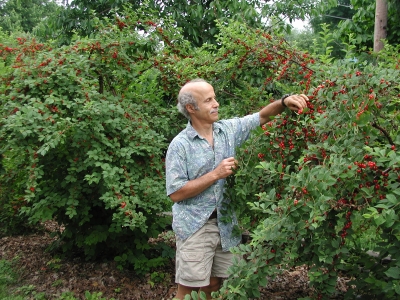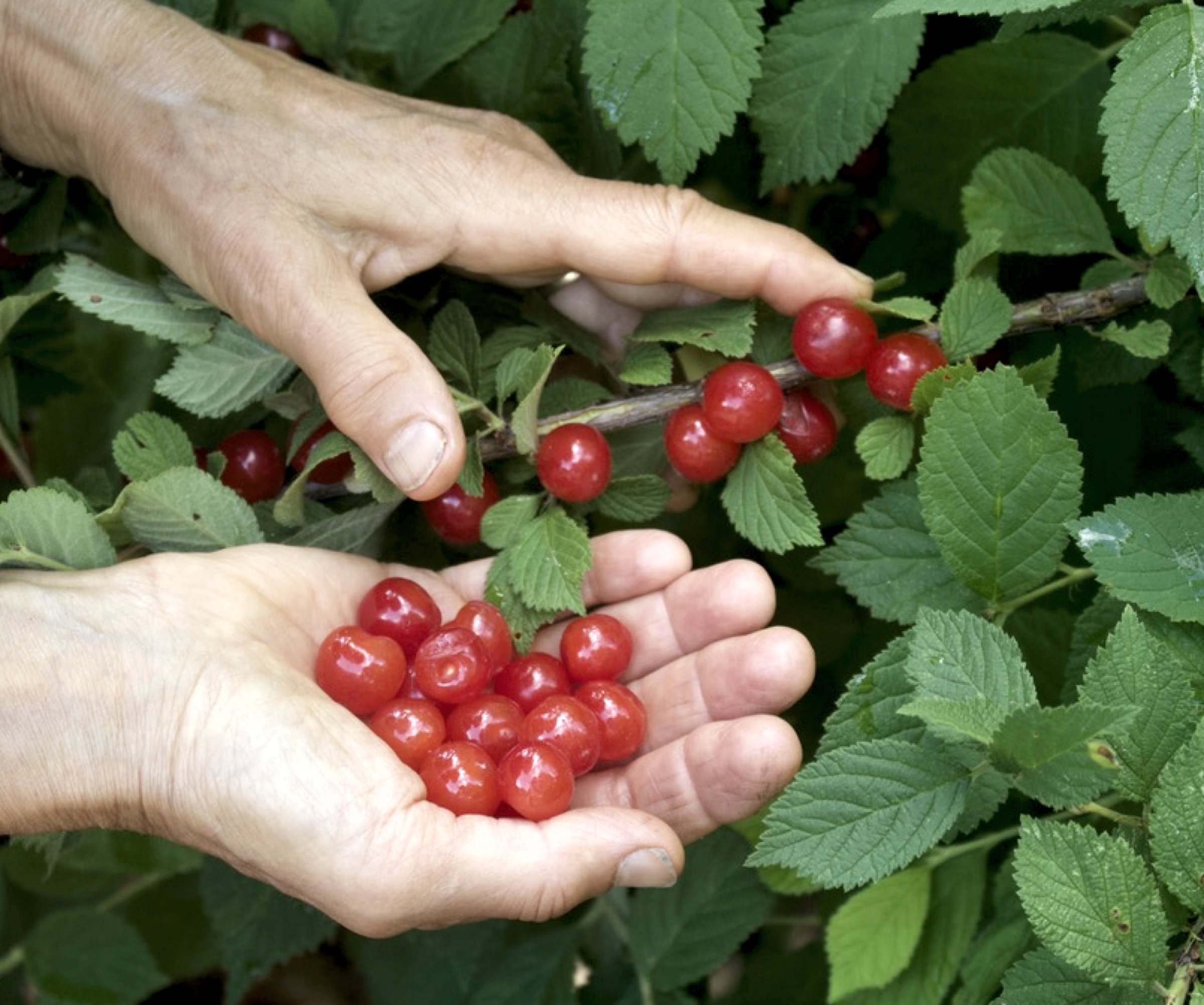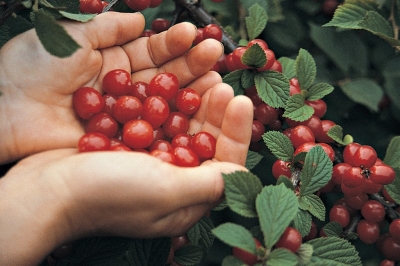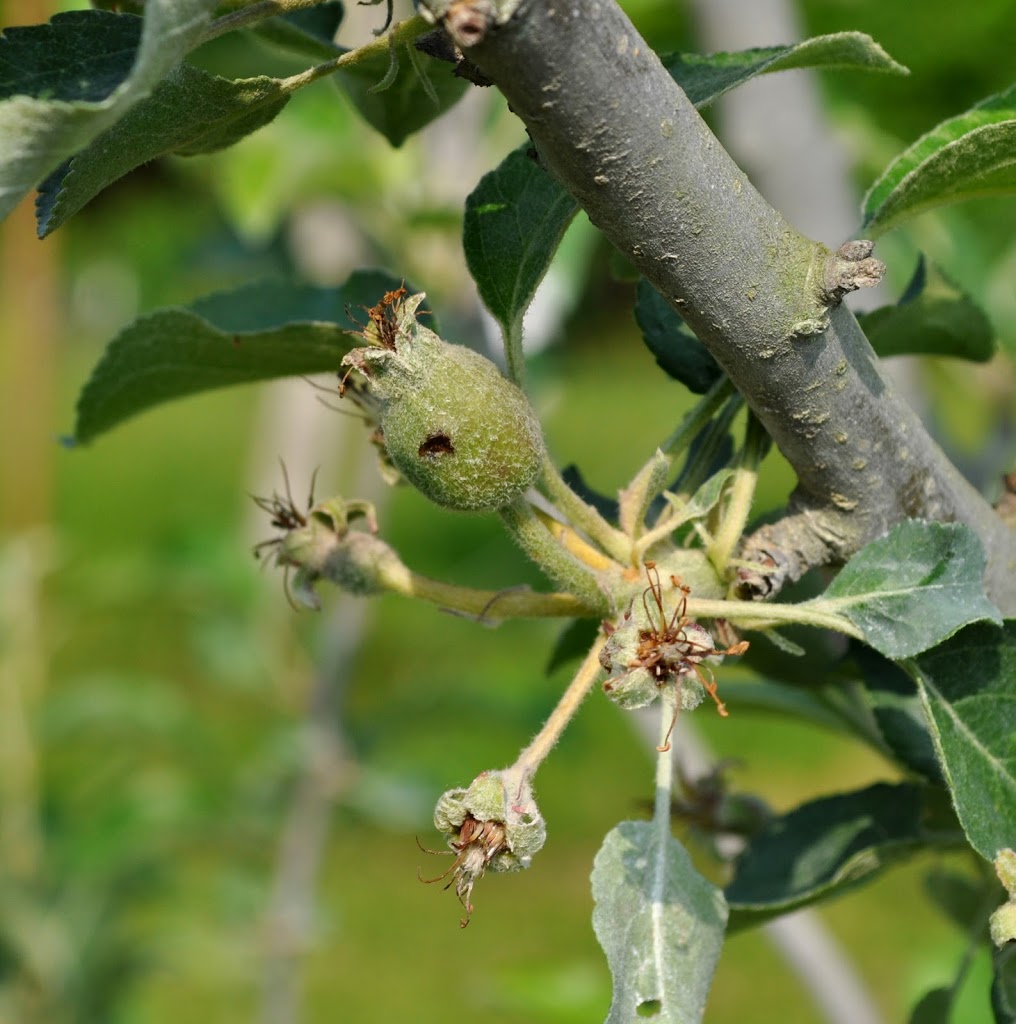Every time I go near my apple and plum trees, I feel like my Nanking cherry, mulberry, pawpaw, and persimmon plants are laughing and flaunting their fruits at me. Nanking cherry and company are just a few of the fruits that I grow that require virtually no care.
Apples, on the other hand: If you wanted to come up with the most difficult fruit to grow east of the Rocky Mountains, it would be apple. Or plum, or apricot, peach, nectarine, or sweet cherry. The plants actually grow fine; getting fruit is another story. Organically grown fruit, that is.
 |
| Apple fruit, already damaged by plum curculio |
The reason these common tree fruits are so difficult to grow around here is because of insect and disease problems (and, in the case of apricot, peach, and nectarine, winter cold and late spring frosts). For an insect or disease to cause a problem, three conditions need fulfillment: The presence of the insect or disease, a susceptible host plant, and an environment congenial to the insect or disease. I mulch my apples and plums with wood chips, prune away diseased stems, grow nectar-producing flowers to attract beneficial insects, spray organic concoctions such as kaolin clay, let chickens run loose beneath the plants, blah, blah, blah; and for all that effort, still often reap little or nothing.
Problem is that the northeast is home to some serious insect and disease problems of apples and company and the environment is much to these pests’ liking, as are the plants. Resistant varieties might be resistant to diseases but not insects or to one disease but not another. No variety is resistant to all the insect and disease pests lurking in forest and field.
————————————————
 |
| Nanking cherries, no need to spray or even prune! |
Still, most people, when they consider growing fruit, think first of apples, and then plums, peaches, and other tree fruits familiar on supermarket shelves. In fact, though, there are a slew of other fruits, many of them, like Nanking cherry and company, very easy to grow. As I point out in my new book, GROW FRUIT NATURALLY (Taunton Press, 2011), the first step in growing fruits naturally/organically/holistically is to select those that are naturally well-adapted to the local climate and insect and disease pressures.
This all-important planning step does not preclude growing many common fruits. Pears, for example, both European and Asian varieties, are relatively easy to grow around here. The trees do need pruning but usually can be grown without the need for any sprays, organic or otherwise. With thousands of varieties, pears alone could round out your larder. I grow about 20 varieties.

Berries are also relatively easy to grow. Pruning is important both for good production and to help keep diseases and insects in check. My berry plantings include raspberries, blackberries, black raspberries, gooseberries (more than a dozen varieties!), red currants, black currants, clove currants, elderberries gumis, seaberries, lingonberries, lowbush blueberries, and, my favorite, highbush blueberries. Pest control? I spray insecticidal soap on my gooseberries once, just as the leaves unfold to kill any imported currantworms that may be starting their leafy feast. I mulch my blueberries late each fall to bury any infected berries that could spread mummy berry disease the following spring. And that’s about it for pest control on all my berries.
Still not enough fruit? Well, there are the mulberries. Not run-of-the-mill mulberries, such as grow wild all over the place. But named varieties — Illinois Everbearing, Oscar, and Geraldi Dwarf — selected for their high quality fruits. And cornelian cherries, an excellent stand-in for tart cherries, except much, much easier to grow. They bloom around the first day of spring yet never fail to set a good crop of fruit. The same can be said for Nanking cherries, a hedge of which lines my driveway and is now yielding many more sweet-tart cherries than I, birds, squirrels, and chipmunks could possibly eat. Total effort involved for all these fruits? None.
And the list goes on: pawpaws, persimmons, hardy kiwifruits, juneberries, grapes . . . so many fruits, so little space. The grapes get bagged to keep insects, diseases, and birds and bay.
(Actually, in my microenvironment, juneberries do not bear well because of various insect and disease problems. The solution? I don’t grow them. But as I wrote, that still leaves plenty of fruits that can be grown easily and without any significant pest problems.)
—————————————————-
So why do I grow apples and plums? I grow them because I frequently write about fruit growing. I grow them to supplement my “book learning” with what I observe “in the field” (in other people’s “fields” also). I grow them because when I apply all the right sprays at just the right time and the weather cooperates and insect and disease pressures aren’t too, too bad and all the stars align just right, I harvest some very tasty apples.
——————————————————–
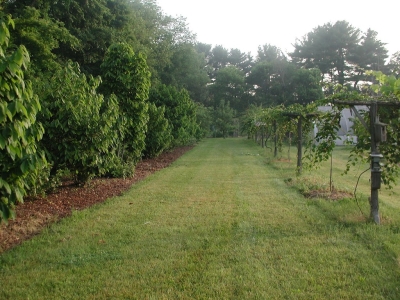 |
| My pawpaws and hardy kiwifruits |
Would I suggest others to plant apples, plums, or possibly peaches, apricots, nectarines, or sweet cherries? Probably not, unless said person was interested in learning a lot about fruit pests, spending a lot of time and no small amount of money dealing with them, and then was willing to accept the fact, as Charles Dudley Warner wrote, tongue-in-cheek and over a hundred years ago in MY SUMMER IN THE GARDEN, that “the principle value of the garden . . . is to teach . . . patience and philosophy, and the higher virtue – hope deferred, and expectations blighted, leading directly to resignation, and sometimes to alienation. The garden thus becomes a moral agent, a test of character, as it was in the beginning.” All well and good if that’s what you want from planting fruit.
—————————————————–
